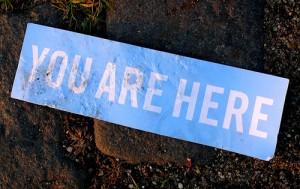To put the title question another way–if the tools and skills (and website) you have now are getting the job done, do you need to be panting after the “next new thing”?
Back in 2003, Dale Dougherty of O’Reilly Media coined the term “Web 2.0” to distinguish the interactive, social-media-driven Internet we have all become familiar with from the static, document-driven Internet now known as “Web 1.0.” And soon after, “Web 3.0” began to be described as an evolution that would be:
- Artificially intelligent (that is, able to “think” meaningfully, rather than just shuffle facts)
- Semantic (with data organized so well that machines don’t need much human intervention to figure things out)
- Virtual (looking more like a “real” world rather than the familiar text-and-graphics version we see now)
- Ubiquitous (with lots of integrated devices, platforms and media that operate together seamlessly)
But subsequent developments have complicated that early projection of a smarter, sleeker web. For one thing, it appears that most people don’t particularly care about entering a visually virtualized world online. Once the new wears off, the experience is just not worth the cost of development and the overhead placed on desktop processing. For another thing, there’s now so much useless and redundant data choking the web that organizing it has evolved into an entirely different kind of problem. And beyond that–we’re already awash in ubiquity. Think iPhone. Think wifi. Think Twitter . . .
Does anyone really want more??
So Web 3.0 has become more of a marketing label than a technology vision, used to hype concepts like cloud computing, products like bing and twine, and an array of start-ups, expos, conferences, etc. Meanwhile, the cognoscenti have moved on to other ways of talking about the future of computing and the role of the Internet. (You can get a feel for this sort of speculation at sites like Tetherless World and The Singularity Institute.)
In more practical terms, however . . . what’s really crucial for the near future is a shift from working with key “words” to key “relationships.” And that brings us back to recruiting and the next new thing.
As a recent commenter (on the KSAs post) pointed out here, the whole process of online recruiting today is disproportionately driven by keywords. Here’s a true (and truly absurd) example: When my resume–which includes experience in data warehousing–was public, I regularly received job offers for warehouse jobs. The forklift kind, not the business intelligence kind. And I’m sure that if recruiters were looking on LinkedIn for dock workers, I’d probably still be getting notified of such “opportunities.”
So the answer to today’s title question is: You bet.
Whoever first gets hold of a tool that will find and read resumes in context for meaningful relationships will get to the best employees fastest and make the best hires in their industry. That tool–at least in my fantasy–will:
- Scour the web for passive candidates and sift through gazillions of applicant submissions in a twinkling
- Create “candidate portfolios” that include profiles of their social media presence; summaries of past positions and employers in terms of relevance; evaluations of writing and organization in the resume/cover letter; plus much more
- Bring to your desktop the cream of the prospect crop, with all the tools your need for personalized candidate communications, and
- Provide a big-picture presentation of the entire candidate pool (with source breakout), as well as a statistical analysis of all the candidates and their rankings, flagging outliers (candidates with potential value that might not be recognized on the basis of standard parameters) and recommending improvements for future searches
Vendors: Write in if you have this tool.
(Thanks to chokola for the evocative photo. FYI, the particular “here” in the photo is Williamsburg, NY.)
Lucy is Editor at Corporate Eye

as far as there are necessities to be covered, and someone that spots them, i think there will always be a new thing. we live in a world that progresses constantly, where things change and evolve, as so do our needs. And i am not only refering to the new needs that could appear as a consequence of progress but also about old needs that are not yet properly covered.
If you look at idealista.com, it doesnt look like nothing really new, but what happened in spain around 2000, is that there wasnt a proper website where you could go to find a house to buy or rent. The CEO at idealista.con saw an opportunity there, a niche, a necessity that wasnt covered by no one really. They introduced a proper search engine, adapted to the user´s needs, and that was the key for them to be now the first spanish speaking real state website. they introduced a new technology to what was until then just covered by newspapers and portals that didnt really made a nice user experie